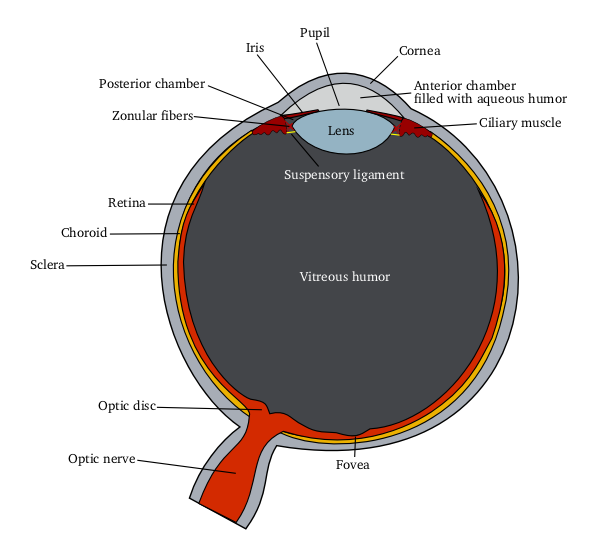
Write the function of the retina in the human eye.
Answer
562.2k+ views
Hint: Eye is the important organ for the survival of all the organisms that provide vision. The image taken from the eyes is transported to the brain as the nerve impulse by the sensory neurons and the image perception or the processing takes place.
Complete answer:
The eye has numerous parts that must cooperate so as to deliver clear vision. Retina is the same as the film of the camera and hence they are called the film of the eye. Their main function of the retina is to receive the image and convert it into the electrical impulse. The retina is composed of ten layers of cells that cooperate to recognize light and transform it into electrical driving forces. These unique cells are called cones and rods and are known as photoreceptors.
Cones:
Cones are situated in the focal, or macula, part of the retina. These cells help recognize shading and bright areas. Additionally, the macula permits us to perform fine capacities like writing, reading and plainly perceiving individuals' facial differences (e.g., spots).

Rods:
Poles are situated in the fringe or external, part of the retina. These cells permit us to see in the poor lighting and furnish us with night vision.
Note: The layer of the retina has the blind spot in it. It is the area which has the optical neurons and this helps in the transferring of the image into the electrical impulses to the brain. In the brain, the visual recognition of an image takes place.
Complete answer:
The eye has numerous parts that must cooperate so as to deliver clear vision. Retina is the same as the film of the camera and hence they are called the film of the eye. Their main function of the retina is to receive the image and convert it into the electrical impulse. The retina is composed of ten layers of cells that cooperate to recognize light and transform it into electrical driving forces. These unique cells are called cones and rods and are known as photoreceptors.
Cones:
Cones are situated in the focal, or macula, part of the retina. These cells help recognize shading and bright areas. Additionally, the macula permits us to perform fine capacities like writing, reading and plainly perceiving individuals' facial differences (e.g., spots).

Rods:
Poles are situated in the fringe or external, part of the retina. These cells permit us to see in the poor lighting and furnish us with night vision.
Note: The layer of the retina has the blind spot in it. It is the area which has the optical neurons and this helps in the transferring of the image into the electrical impulses to the brain. In the brain, the visual recognition of an image takes place.
Recently Updated Pages
Why are manures considered better than fertilizers class 11 biology CBSE

Find the coordinates of the midpoint of the line segment class 11 maths CBSE

Distinguish between static friction limiting friction class 11 physics CBSE

The Chairman of the constituent Assembly was A Jawaharlal class 11 social science CBSE

The first National Commission on Labour NCL submitted class 11 social science CBSE

Number of all subshell of n + l 7 is A 4 B 5 C 6 D class 11 chemistry CBSE

Trending doubts
Differentiate between an exothermic and an endothermic class 11 chemistry CBSE

10 examples of friction in our daily life

One Metric ton is equal to kg A 10000 B 1000 C 100 class 11 physics CBSE

Difference Between Prokaryotic Cells and Eukaryotic Cells

1 Quintal is equal to a 110 kg b 10 kg c 100kg d 1000 class 11 physics CBSE

State the laws of reflection of light




